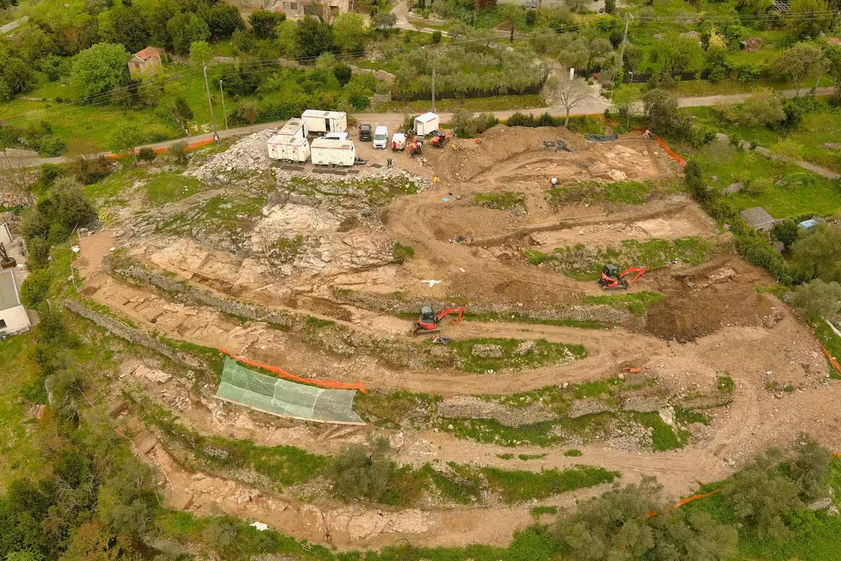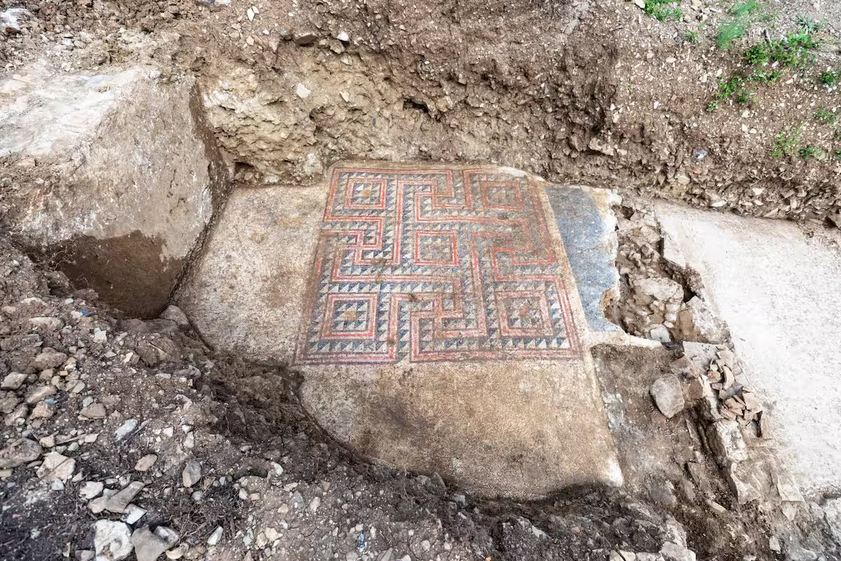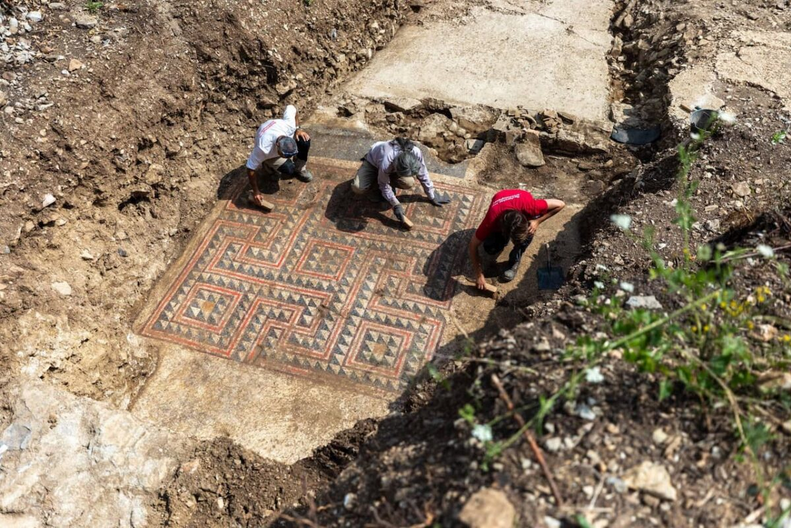Archaeologists have unearthed, on a hill overlooking the city of Alès in southeastern France, a Gallo-Roman archaeological site that reveals continuous human occupation between the 2nd and 6th centuries AD. The excavations uncovered remains of dwellings, hydraulic systems, a lavish polychrome mosaic, and a late Roman funerary area.
 At least four ancient dwellings partially excavated into the rock had interior walls coated with a layer of clay to contain water seepage from the limestone banks during rainfall. This system, complemented by underground conduits made from roof tiles and infill blocks that functioned as drainage, demonstrates advanced knowledge of architecture and hydraulic engineering by its builders.
At least four ancient dwellings partially excavated into the rock had interior walls coated with a layer of clay to contain water seepage from the limestone banks during rainfall. This system, complemented by underground conduits made from roof tiles and infill blocks that functioned as drainage, demonstrates advanced knowledge of architecture and hydraulic engineering by its builders.
In some places wall paintings can still be seen, though heavily deteriorated by the passage of time. The floors rested on a base of a mix of stone fragments and limestone dust which supported pavements made of limestone slabs or lime mortar.
 But the most outstanding discovery is a building of approximately 750 square meters (8073 sf) that underwent at least two remodeling phases. Initially, its floors were made of compacted earth, but over time they were replaced with concrete pavements decorated with small pieces of mosaics in an exceptional state of preservation.
But the most outstanding discovery is a building of approximately 750 square meters (8073 sf) that underwent at least two remodeling phases. Initially, its floors were made of compacted earth, but over time they were replaced with concrete pavements decorated with small pieces of mosaics in an exceptional state of preservation.
 Archaeologists discovered an ingenious rainwater drainage system made with amphorae, whose ends were cut and fitted together—a method that allowed water to be channeled from the roof to the outside.
Archaeologists discovered an ingenious rainwater drainage system made with amphorae, whose ends were cut and fitted together—a method that allowed water to be channeled from the roof to the outside.
 This discovery confirms the importance of Alès as an inhabited center in antiquity and reveals the high technical and artistic level of its residents, with the mosaic being one of the most significant pieces found in the region in decades.
This discovery confirms the importance of Alès as an inhabited center in antiquity and reveals the high technical and artistic level of its residents, with the mosaic being one of the most significant pieces found in the region in decades.
You can read the original article at www.labrujulaverde.com
